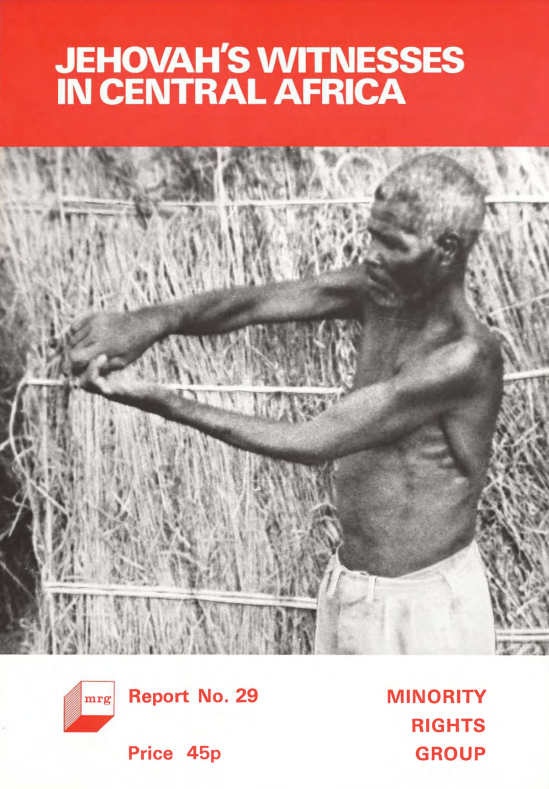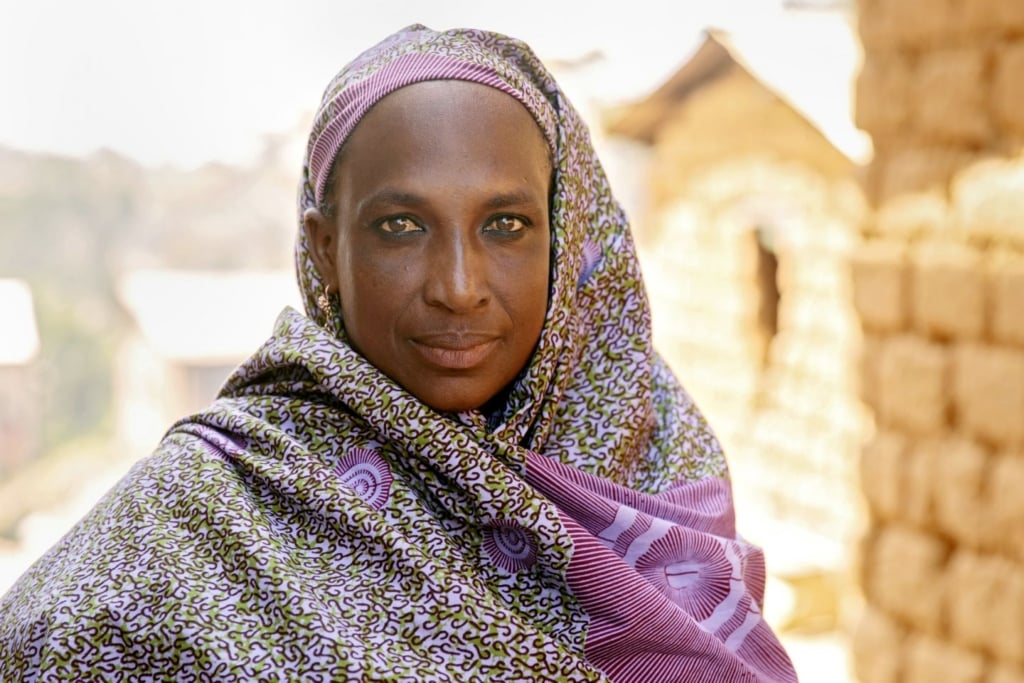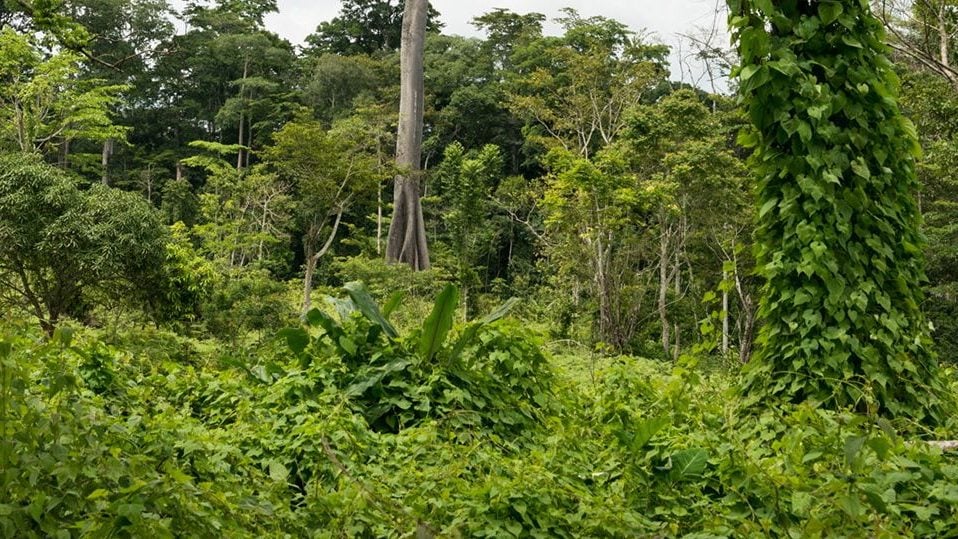Cameroon
-
Main minority and indigenous communities: The population of Cameroon was estimated as of July 2016 at 24.4 million: these included highlanders (grassfielders) (31 per cent); equatorial Bantu (19 per cent); Montagnards (11 per cent); Fulani / Peuhl (10 per cent); northwestern Bantu (8 per cent); and eastern Nigritic (7 per cent). Indigenous forest-dwelling hunter-gatherer peoples make up 0.4 per cent of the population: they include the Ba’Aka (around 40,000), BaKola / BaGyeli (around 3,700) and Bedzam / Bedding. The Mbororo community are an indigenous community situated in the borderlands of Cameroon
Main languages: French (official), English (official), Bamiléké, Fang, Ewondo, Kirdi, Fulfulde, Pidgin English.
Main religions: traditional beliefs (14 per cent), Christianity and syncretic Christianity (63 per cent), Islam and syncretic Islam (22 per cent), Gnostics (1 per cent).
Heavily influenced by German, British and especially French imperial interests, Cameroon is home to more than 250 ethnic groups and sub-groups, many of which spread across neighbouring countries. These can be classified in five major regional-cultural groups.
Western highlanders, also called grassfielders, form the largest of these with about 38 per cent of the population. They include the Bamiléké, Bamoun and other north-western peoples. In a region of fertile soils, Bamiléké are noted and frequently resented for their success in farming and commerce.
Southern tropical forest peoples include the Ewondo, Bulu and Fang, all of which are in the Beti cluster of peoples. Much of the country’s political elite has come from the Bulu sub-group. Nomadic forest peoples, commonly referred to as ‘Pygmies’, eke out precarious livelihoods in the shrinking forests of the south-west and south-east. These peoples include the Ba’Aka, BaKola, BaGyeli and Bedzam. They have faced pressure from the Catholic Church and the government to settle in ‘pilot villages’ and along roadways, and have been exploited by logging companies to assist in the destruction of their forest environment.
Montagnards are also known as ‘Kirdi’, a collective name for several non-Muslim peoples in the north who make up around 11 per cent of the total population. They outnumber the Muslim population of the north but are much less organized politically. While the term, meaning ‘infidel’, has pejorative roots the name has since been adopted as a marker of ethnic and religious pride.
Islamic peoples of the northern Sahel include the Peuhl, who are cotton and rice farmers, as well as livestock herders. Peuhl elites have gained national political prominence.
Coastal tropical forest peoples include Bassa, Douala and smaller groups of the south-west.
Overlaying Cameroon’s rich ethnic diversity is a split between Anglophone and Francophone Cameroon, a legacy of the country’s divided colonial history. Both English and French are official languages, but Francophone Cameroonians outnumber Anglophone Cameroonians by about four-to-one.
Christians, including both Roman Catholics and Protestants, are more concentrated in the south and west. Muslims are found in all parts of the country, but more concentrated in the north. Many Christians and Muslims integrate traditional beliefs into their religious practices.
 Mbororo children in Cameroon. Credit: MRG / Emma Eastwood.
Mbororo children in Cameroon. Credit: MRG / Emma Eastwood. -
Cameroon has seen sharply escalating political violence in the country’s north-west and south-west regions. Peaceful demonstrations in 2016 against decades-old political and economic marginalization of the country’s Anglophone regions by the French-dominated government has led to a separatist movement for an independent state, Ambazonia. Thousands of people have been killed or disappeared at the hands of government forces and numerous emerging separatist groups, who have committed a range of abuses, often against civilians. President Paul Biya, in power since 1982, has labelled the separatists as terrorists and social media ‘a new form of terrorism’. Both sides have been accused of serious abuses, with Human Rights Watch reporting in March 2019 that at least 170 civilian deaths had taken place in Anglophone areas at the hands of government forces and armed separatists since October 2018. More than half a million civilians have been displaced so far as a result of the crisis.
At the same time, Boko Haram attacks persist in the far north, adding to the growing numbers of IDPs and a deepening humanitarian crisis. Despite joint military efforts between Cameroon and Nigeria to subdue the group, it has conducted cross-border operations in Cameroon’s rural and impoverished far north, attacking and shelling groupings of Nigerian refugees and restricting humanitarian aid efforts. It has also targeted Cameroonian villages, churches and security forces, killing, wounding or displacing minority Christians and majority Muslims alike. The struggle with Boko Haram has killed an estimated 2,000 Cameroonians, displaced some 170,000 others and also encouraged the development of self-defence vigilante groups. Serious human rights violations by Cameroon’s security forces engaged in combating Boko Haram, including arbitrary arrest, torture, enforced disappearance and unfair trial.
Due to severe funding shortfalls, the humanitarian response has not kept pace with the needs of these populations: furthermore, endemic food insecurity means that even local populations not directly affected by displacement have serious needs that are not being met. These factors contribute to ongoing tensions over access to land, water and other resources between the local host community and displaced or refugee families. Authorities have at times expelled refugees from Cameroonian territory, including many fleeing Boko Haram. In January 2019, the UN condemned the forced expulsion of thousands of Nigerians from Cameroon despite the continued risk they face from armed insurgents.
Insecurity in the CAR has also contributed to a large influx of displaced communities into Cameroon. February 2014 saw the beginning of a mass return to east Cameroon of Cameroonian Muslim migrants who had been living in the CAR until violence at the hands of armed Christian and animist self-defence ‘anti-balaka’ (‘anti-machete’) militias forced them to flee the country. In addition, large numbers of largely Muslim CAR refugees fled to Cameroon. Many took refuge in towns and villages somewhat inside Cameroon, away from the border, to avoid attack. By doing so they transformed a swathe of formerly majority Christian settlements into majority Muslim ones.
In some areas conflict has broken out with local residents over resources, such as access to health services and shelter. Food supplies, stretched past capacity, have caused hardship for locals and refugees alike, fuelling competition and resentment between them. Cattle-herding Peuhl (also known as Mbororo) refugees – targeted in the CAR for their perceived wealth and livestock – have also struggled to locate adequate grazing land for their cattle, at times resulting in disputes over grazing land and other resources with local farmers, who are largely Christian.
Despite its substantial natural resources, poverty remains widespread in Cameroon. The country has been engaged in the UN REDD+ (Reducing Emissions from Deforestation and Forest Degradation) programme, though the benefits for forest-dwelling communities have been mixed: a March 2016 evaluation of the REDD+ Ngoyla-Mintom pilot project in southwest Cameroon, for example, found that the free, prior and informed consent of affected communities had not been obtained. Cameroon is also engaged in the EU-FLEGT process against illegal logging, having signed a Voluntary Partnership Agreement in 2010. Despite the inclusion of measures to ensure transparency, access to information reportedly remains a key challenge facing the affected communities. Despite being the first to populate the southern tropical forests, indigenous forest-dwelling hunter-gatherer communities such as Ba’Aka, Bagyeli, Bakola and Bedzam – who together comprise less than 1 per cent of the population – are currently threatened by the expansion of logging, agro-industry, mining and natural protected areas into their customary lands.
Nomadic Mbororo pastoralists also face continued difficulties over issues around rights to land and resources. Though dependent on grazing areas to feed their livestock, resource conflicts and inter-communal tensions with large landowners have left them at risk of eviction and other human rights abuses – a situation exacerbated by the uncertainties some community members experience around statelessness. The distinct social code, nomadic traditions and to some extent their predominantly Muslim faith, as well as the pre-existence of other settler communities in the areas where they migrated, has meant that Mbororo remain to this day on the ‘margins of citizenship’ in Cameroon. Research among the community has repeatedly highlighted how they continue to be widely regarded as ‘settlers’ and that their nomadic practices mean that many believe they may in future leave the territory again.
-
Environment
Straddling the equator on the western coast of Africa, Cameroon shares a long north-western border with Nigeria, a north-eastern border with Chad, an eastern border with the Central African Republic, a south-eastern border with the Republic of Congo (Congo-Brazzaville), and southern borders with Gabon and Equatorial Guinea. The western coastal plain receives heavy rainfall and is heavily forested. Mt Cameroon, an active volcano, is the highest point in West Africa and lies along the northern coast. Other highlands extend from there, along the Nigerian border and into northern Cameroon. Central plateaus are savannah grasslands. Large areas of Cameroon have fertile soils exploited for farming and the country has modest oil reserves.
History
The first inhabitants of Cameroon were hunter-gatherer groups such as the Ba’Aka. Bantu speaking groups followed. Peuhl moved into the north of present-day Cameroon beginning late in the 18th century. The Peuhl captured many Kirdi for sale through the trans-Saharan slave trade and introduced Islam.
Europeans first arrived in the south in the 16th century, establishing trading posts along the coast and sending southerners into slavery across the Atlantic.
Germany established a protectorate of Kamerun in 1884, sparking resistance from many local peoples. The territory was divided between Britain and France after Germany’s defeat in World War I under the auspices of the League of Nations. British Cameroon, in the north, was ruled from Lagos, Nigeria, while French Cameroon, which made up 80 per cent of the territory, was divided among other French colonies, with a remnant ruled from today’s capital, Yaoundé. Britain abolished forced labour, but France continued to use forced labour for the production of cash crops until after World War II.
An armed rebellion against French rule, espousing Marxist ideology, erupted in 1955. The Bamiléké and Bassa ethnic groups were at the centre of the Union of the Peoples of Cameroon (UPC). The conflict continued into the post-independence era and cost many thousands of lives.
French Cameroon gained independence in 1960 as the Republic of Cameroon. The following year, the people in the northern part of British Cameroon, mostly Muslims, voted to join Nigeria in a referendum sponsored by the United Nations. The southern part of British Cameroon, home to mostly Christians, opted to join Cameroon, now called the Federal Republic of Cameroon. Under the 24-year rule of the country’s first president, Ahmadou Ahidjo, a Peuhl from the north, various ethnic groups vied for power through his patronage network. Ahidjo established one-party rule in 1966, and put down the last of the UPC rebellion by 1970. A constitutional amendment in 1972 ended the federal system and renamed the country the ‘United Republic of Cameroon’.
Ahidjo resigned in 1982, handing power to his prime minister, Paul Biya – an ethnic Bulu. However, Ahidjo loyalists attempted a coup two years later, and its failure led him to flee the country. In 1984, Biya changed the name of the country back to ‘Republic of Cameroon’ and won elections in which he was the only candidate. He has remained in power ever since. In 2008, the Cameroon parliament passed a controversial constitutional amendment removing the previous two-term limit, allowing Biya to run for a third term in 2011. While he has received over 70 per cent of the vote in the last several elections, the opposition and international observers have alleged widespread irregularities. Biya has maintained close ties with France.
President Biya’s ethnic group, the Bulu, has dominated politics and the military. Beyond the exclusion of other ethnic groups, Biya has favoured Francophones over Anglophones. In the 1990s, in the face of increasing hostility and repression by central government, Anglophone pressure groups persisted in challenging their second-class status and calling for greater regional autonomy. A group called the Southern Cameroon National Council even called for the secession of the country’s two southern, English-speaking provinces, and was promptly banned.
Governance
Cameroon has been run by two presidents and a single party since independence. President Paul Biya, in power for over thirty years, was most recently elected in 2011; his party retained a majority of seats in the last legislative elections, held in 2013. The President appoints governors, local officials, judges and over 60 cabinet ministers. He also oversees other elements of a vast patronage network, appointing and firing the heads of over 100 large state companies. The National Assembly has no authority, and the judiciary is subject to orders from the President’s Ministry of Justice. Cameroon is reportedly greatly affected by corruption and there are no reliable guarantees of civil liberties.
The oil-rich Bakassi peninsula has long been a source of conflict with neighbouring Nigeria. In 2002 the International Court of Justice recognized Cameroonian sovereignty there, but Nigerian troops continued to occupy it until 2006.
Ahead of legislative elections in April 2013, Mbororo and traditional forest-dwelling groups as well as members of the Montagnard (also known as ‘Kirdi’) minorities from the northern highlands reportedly criticized political parties for not honouring previous commitments to field minority candidates. They urged the President, who has the right to appoint some legislators, to name minority representatives.
An official study aimed at specifying criteria for identifying indigenous peoples in Cameroon is underway, but criticisms around its lack of involvement with the communities themselves have been repeatedly raised.
-
General
- Association for the Reconstruction and Development of the Moko-oh Peoples Cameroon (AFTRADEMOP)
- Association of Human Rights and Torture Defenders (AHURTOD)
- CED (Centre pour l’Environnement et le Développement)
- Commission Nationale des Droits de l’Homme et des Libertés
- Consortium d’Appui aux Actions pour la Promotion et le Développement de l’Afrique (CAPDA)
- Fondation Humanus (Humanus International)
- Mbororo Social and Cultural Development Association (MBOSCUDA)
Forest peoples
- CADDAP (Centre d’Action pour le Développement Durable des Autochtones Pygmées)
Updated June 2019
Related content
Latest
View all-

7 December 2021
Early warning mechanisms key to calming ethnic tensions
By Billy Rwothungeyo, Africa Media Officer at Minority Rights Group The Rwenzori region in Uganda is volatile, simmering tensions between…
-

17 September 2021
Indigenous paralegals and the fight for climate justice
By Eunice Nsikak Olembo, Africa Legal Officer at Minority Rights Group For indigenous communities, climate justice is not simply about…
-

25 August 2021
‘Network for Peace’ project improves lives of minority communities
By Geofrey Sabiiti, Africa Conflict Prevention and Peace Building Coordinator, MRG Africa ‘Network for Peace‘ is a three-year…
Reports and briefings
-
1 June 1976
Jehovah’s Witnesses in Central Africa
Jehovah’s Witnesses – the members of an American-based millenarian religious sect known as the Watch Tower Bible and Tract…
Programmes
Events
-

21 September 2019 • 9:00 am – 1:00 pm WAT
The protection of human rights of ethnic minorities and Conflict Prevention using Early Warning Mechanism
Minority Rights Group International (MRG) has over 50 years of experience working to secure the rights of ethnic, religious and linguistic…
Don’t miss out
- Updates to this country profile
- New publications and resources
Receive updates about this country or territory
-
Our strategy
We work with ethnic, religious and linguistic minorities, and indigenous peoples to secure their rights and promote understanding between communities.
-
-


